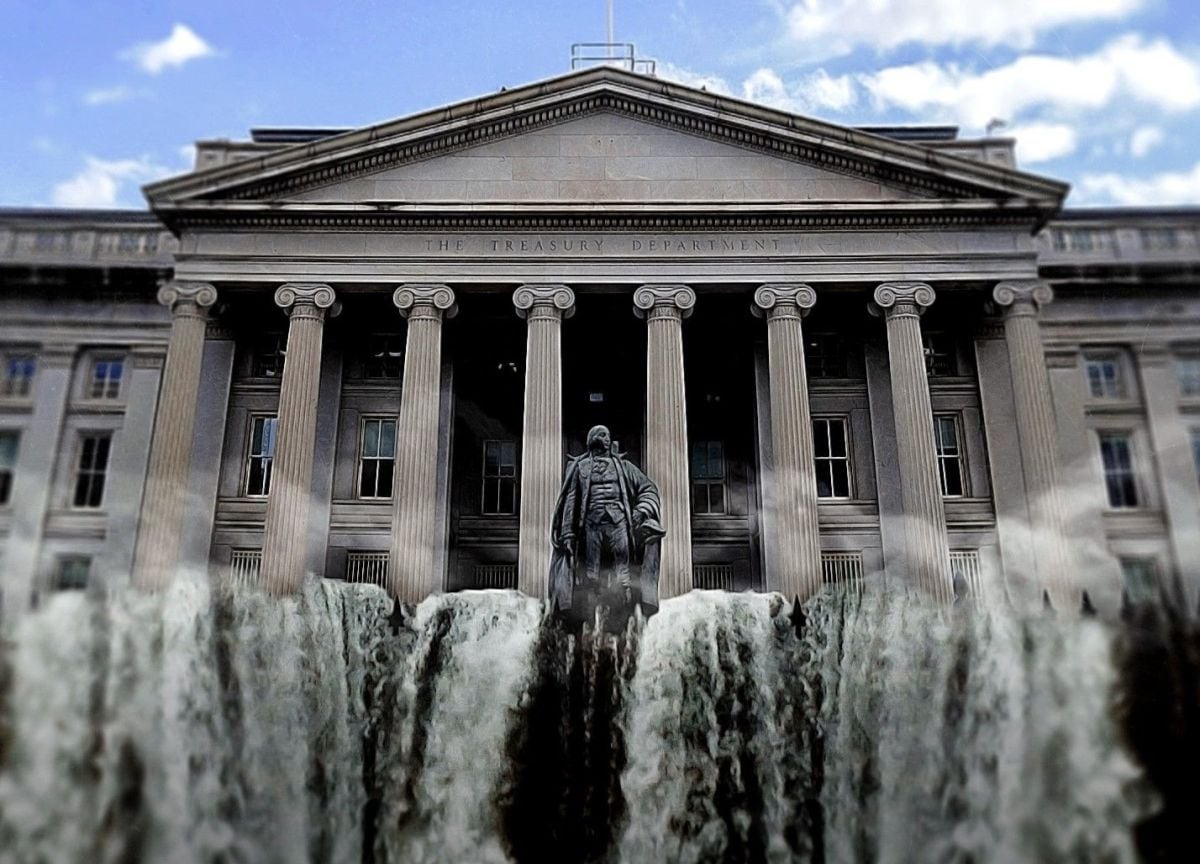
A default of the US Treasury debt would mean a leap into the void for the Federal Reserve’s ability to carry out a monetary policy that allows it to achieve its employment and inflation targets.
US government debt is key for the central bank to set its short-term interest rate target, so anything that destabilizes the Treasury bond market could disrupt those mechanisms.
The Fed uses Treasuries for many key operations. Setting a base for short-term interest rates through its reverse repo mechanism involves borrowing cash from money market funds in transactions collateralized with government bonds. The Federal Reserve You can also borrow or buy Treasury bonds to keep the federal funds rate at the set level.
The secretary of TreasureJanet Yellen has said the government could run out of funds to pay all its bills by early June if the debt ceiling is not raised. The White House and Republican lawmakers in Congress are locked in tense negotiations with little indication that they are close to a deal to avoid a default, which could wreak havoc on the global financial system.
For the Federal Reserve, the prospect of a default means uncertainty not only because of the debilitating effects it would likely have on the economy, but also because of the way it handles the day-to-day ins and outs of monetary policy: Would money market funds accept a higher value? impaired Treasury security as collateral? Would the Federal Reserve be willing to borrow or buy a distressed Treasury security?
Central bank officials, beginning with the president of the fedJerome Powell, have insisted that the only solution is to raise the debt ceiling to $31.4 trillion and have avoided offering details about what the Fed might do.
“I’m not going to speculate on what could or could possibly happen (…) I don’t think that’s helpful”, said last week the president of the Federal Reserve of New York, John Williams.
The past as precedent
This is not the first experience of the Federal Reserve with the debt ceiling policy. There is a manual of previous matches in 2011 and 2013 that would probably be the basis for answering in case this episode ends in a “default” instead of an agreement to avoid it, as in the past.
The minutes of the meeting of the fed October 2013 indicated that officials hoped they would not need any changes to procedures and would deal with market-priced values, while leaving some room to intervene to stabilize them if necessary.
Now there are also some differences that give the fed some room, at least in terms of how its market operations could work, largely due to its huge balance sheet. The Fed currently owns about $5.2 trillion in Treasury debt, and most of it would be fine at the start of a default.
“Even if there is a default, say in July or June or something like that, there are more than enough guarantees that they wouldn’t be in default.”, so the Federal Reserve it could still transact with money market funds to keep its overnight repo mechanism running, it said joseph wanginvestment director of Money Macro.
He added that he would expect money market funds to accept bonds from the Treasure impaired if necessary because ultimately these companies are lending to the Federal Reserve anyway, and there’s little chance they won’t get their money back.
Wang also expects the central bank of USA accept written-off Treasuries as part of your repo line, as well as in any discretionary trades you may undertake, because failure to do so could cause a bigger problem.
“It would seem strange that the Federal Reserve would want to cause trouble itself, since its mandate includes financial stability.“, he claimed.
Even so, the pricing of securities could be a significant problem, which could worsen the longer the default persists.
Derek Tangforecasting firm analyst L.H. Meyersaid that the fed it has probably been vague about contingencies because it wants elected leaders to solve the problem and not see the central bank as a safety valve.
And that’s where the deterioration in the price of a Treasury bond complicates the operations of the fed. Determining a market price can be difficult, but if the central bank decides to accept such a bond at a price higher than what the market is offering, the Fed could be seen as becoming “a facilitator of this drama“, said Tang.
Beyond how to keep the wheels of monetary policy turning, other questions the central bank may have to grapple with are whether to intervene with bond purchases to stabilize markets, as it did in March 2020 during the COVID-19 pandemic. . Some officials of the fed They have talked in recent months about having this power separate from the purchase of assets intended to stimulate the economy.
Source: Reuters
Source: Gestion
Ricardo is a renowned author and journalist, known for his exceptional writing on top-news stories. He currently works as a writer at the 247 News Agency, where he is known for his ability to deliver breaking news and insightful analysis on the most pressing issues of the day.












